Relevant For Preliminary Test 2019:
Modern History
- Even after 70 years of independence when we Indians could feel the fervor and the resentment of the people who witnessed that era and even participated in the freedom process of India. People from all walks of life forgot all differences and came together from all walks of life and all classes of society be it men or women or youth all came on streets to fight for the freedom of their country. We still read or hear with awe about courageous stories of freedom fighters of those times; they still fill our hearts with respect, courage and patriotism and leaves our eyes wet with tears.
- History has witnessed many women with exceptional bravery and intelligence who walked shoulder to shoulder with men of their times. Let us remember women of the freedom era who fought bravely for their country and contributed towards the achievement of independence of the country India. They are still a source of inspiration to not only women but to all.
- Though there are many, here is a list of only 12 of them who were exceptionally great and their absence would have definitely made this task more difficult than it was.
1. Rani lakshmibai (19th November – 17th June 1858):-
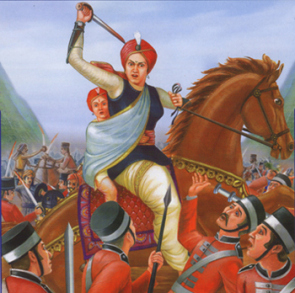
- A name etched in history for her bravery forever. She was the queen of Maratha ruled state of Jhansi. She was the first prominent women freedom fighter, who participated in the first freedom rebellion of 1857. British wanted to take over the princely state of Jhansi under the cover of “Doctrine of Lapse”. Sir Hugh Rose came to capture the city of Jhansi in March 1858 but, the brave Lakshmibai announced to fight for freedom instead to surrender. Though she was defeated here and decided to leave and fight from camp at Kalpi. After Kalpi they decided to fight from Gwalior Fort. Here Lakshmibai with Damodar Rao, her son on her back and i cavalry attire died after fighting bravely. Even Hugh Rose praised her bravery and commented that she is the most dangerous of all Indian leaders, which is a commendable tag.
2. Begum Hazrat Mahal (1820- 7th April 1879):-
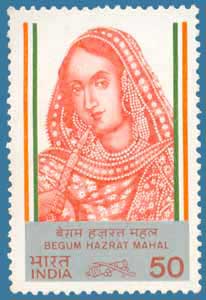
- She was another queen of a princely state who rebelled against the British East India Company. She was also known as the Begum of Awadh. She also played a major role during the rebellion of 1857. After the death of her husband Nawab Wajid Ali Shah, she took over the affairs of state of Awadh. During the rebellion, the supporters of Begum seized control of Lucknow as an act of rebellion against British East India Company and declared her son, Bijris Qadra as the ruler of the state of Awadh, though later it was recaptured by the Company and Begum was exiled to Calcutta. She drew everyone’s attention towards the demolishment of temples and mosques by the Company to make way for the construction of roads thus; hurting religious sentiments of Indians. Karl Marx said about Begum that “during the national liberation uprising of 1857-1859 in India headed the rebels”.
3. Annie Besant (1st October 1857- 20th September 1933):-
- Though she was British socialist she was a supporter of Indian self-rule. In 1890 she joined Theosophical society as a member and later became its president thus; she visited India where she helped in the establishment of Central Hindu College, and Sind National Collegiate Board in Mumbai in 1902. In 1914 when the world was witnessing World War I, she started All India Home Rule League along with Lokmanya Tilak. This body had many branches in India which was active the whole year round and mobilized agitations and demonstrations demanding home rule in India. This compelled the Company to declare that they are working towards the Indian self-government. She also joined Indian National Congress and once became president of the Congress for one year. Her active participation in politics gave way to Indians to gain independence.
4. Madam Bhikaiji Cama (24th September 1861- 13thAugust 1936):-
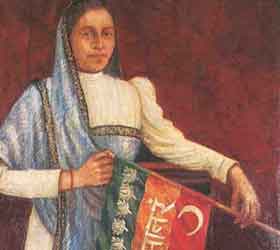
She belonged to Parsi community and was a philanthropist and an active social worker. During the epidemic of bubonic plague that hit Mumbai in 1896, she herself got infected with the disease while providing aid to the others thus; she was sent to Britain for her treatment. Throughout her life, she struggled for Indian Independence from abroad as she was told by her acquaintances not to take part in freedom struggle if she comes back to India. While working as secretary to Dadabhai Naoroji she supported the founding of Shyamji Krishna Verma’s Indian Home Rule Society. On 22nd August 1907, she unfurled the Indian flag (Flag of Indian Independence) in Stuttgurt, Germany while attending the International Socialist Conference, there she made people aware of the aftermath of the famine that had hit the Indian Subcontinent and raised her voice for the human rights and equality in India. She was an active freedom fighter and was later sent to exile in Europe until 1935.
5. Kasturba Gandhi (11th April 1869- 22 February 1942):-
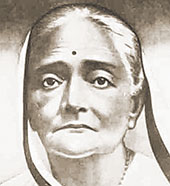
- Being the better-half of Mohandas Karamchand Gandhi, Kasturba Gandhi played a role as a political activist who was fighting for civil rights as well as Indian independence. She accompanied her husband to all demonstrations and movements and even took his place in his absence. She played the role of teaching Indians basic lesson of health, hygiene, discipline, reading, and writing due to lack of proper education to all. She played an important role at the backstage of the freedom struggle.
6. Sarojini Naidu (13th February 1879- 2nd March 1949):-
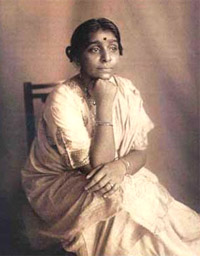
- Popularly known as “the nightingale of India” Sarojini Naidu contributed towards freedom struggle by joining politics during the wake of Partition of Bengal in 1905. She traveled to various places in India and delivered lectures on social welfare, making women aware towards freedom struggle and invoking them to participate, and arousing the feeling of nationalism through her lectures. In 1917 she even helped to launch Women’s Indian Association. She has many first credit tags to her credit- she acted as the first governor of the United Provinces of Agra and Oudh, with this she also became the first woman to become governor of any Indian state. She was the second woman to become the president of Indian National Congress and the first Indian woman to become so.
7. Kamala Nehru (1st August 1899- 28 February 1936):-
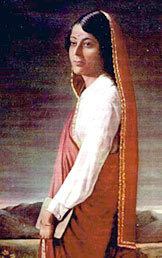
- Kamala Nehru was married to Pandit Jawaharlal Nehru. Being the wife of a person whose contribution to Indian freedom struggle can never be forgotten is in itself a great contribution to Indian freedom struggle. At a prominent instance, in 1921, during the Non-Cooperation Movement in Allahabad she organized groups of women and picketed shops of liquor and foreign cloth. Performing the role of a wife she often went to deliver speeches when Nehru ji failed to appear.
8. Vijaya Lakshmi Pandit (18th August 1900- 1st December 1990):-
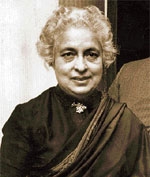
- Vijaya Lakshmi Pandit was a sister of Pandit Jawaharlal Nehru and played a crucial role in Indian politics. She was the first women to become a cabinet minister, she was designated the post of minister of local self-government and public health. She is well known for her political and diplomatic role during the freedom struggle. She was also the first woman president of United Nations General Assembly. She was also the first woman ambassador in the world who attained the position in three countries – Moscow, Washington and London.
9. Sucheta Kripalani (25th June 1908- 1st December 1974):-
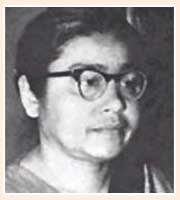
- She was a freedom fighter and worked closely with Mahatma Gandhi during Partition riots in India. She also played a major role in politics by joining Indian National Congress. During the formation of the constitution of India, she was elected as a member of the drafting committee of Constituent assembly. Another feather in her cap is attached when she sang “Vande Mataram” in the Constituent Assembly. She was also elected as the chief minister of Uttar Pradesh state after independence.
10. Aruna asaf Ali (16th July 1909- 26th July 1996):-
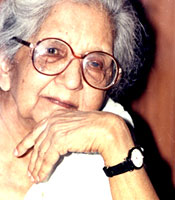
- She is well known as Indian independence activist. Being an activist she participated actively in public processions during Salt Satyagraha, and she also became an active member of Indian National Congress. Due to her activity, she was imprisoned but prison walls did not stop her she continued with her protests and strikes inside the jail for indifferent treatment of prisoners which resulted in the improved condition of prisoners in Tihar Jail.
11. Durga Bai Deshmukh (15th July 1909- 9th May 1981):-
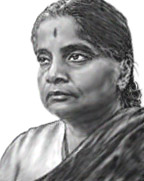
- She was a follower of Mahatma Gandhi and thus; played an active role in Gandhi Satyagraha movement and played a role of Indian struggler, a lawyer, a social activist and a politician. She was a lok sabha member as well as a member of Planning Commission of India. While being a member of Planning Commission she launched a Central Social Welfare Board through which she improved the condition of education, women, children, handicap and rehabilitation of needy persons.
12.Usha Mehta Savitribai Phule (25th March 1920- 11thAugust 2000):-
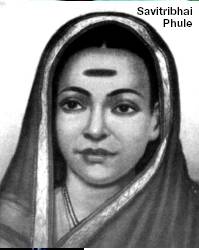
- A very great contribution to her credit is the origination of Congress Radio also known as Secret Congress Radio, which was an underground radio station which was active for few months during the Quit India Movement of 1983. Due to this clandestine activity, she was imprisoned in Yeravda Jail of Pune. She was also a follower of Mahatma Gandhi and a freedom fighter.
13.Begum Royeka:-
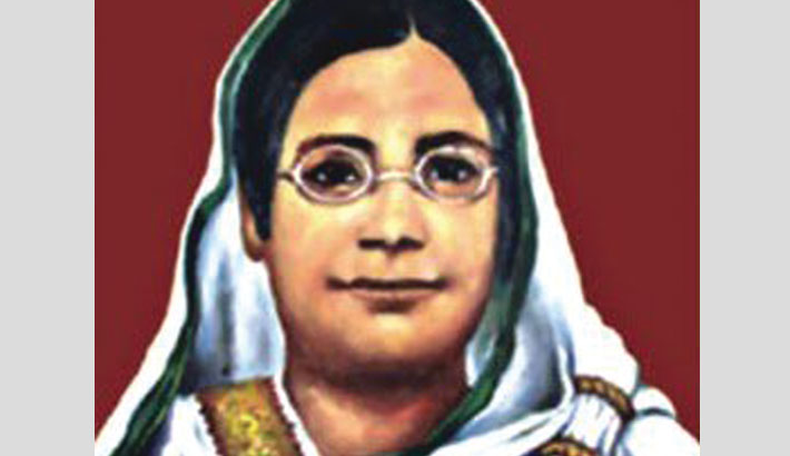
- “Had God Himself intended women to be inferior, He would have ordained it so that mothers would have given birth to daughters at the end of the fifth month of pregnancy. The supply of mother’s milk would naturally have been half of that in case of a son. But that is not the case. How can it be? Is not God just and most merciful?”
- This great lady was perhaps the first amongst the other female freedom fighters, who fiercely fought for the gender equality, back in that time when the freedom was only a dream. She wrote novels, poems, short stories, science fiction, satires, treatises, and essays where she advocated that both men and women should be treated equally. She also emphasized the lack of education and claimed it, being the main reason for women’s lagging behind.
14.Kittur Rani Chennamma:-
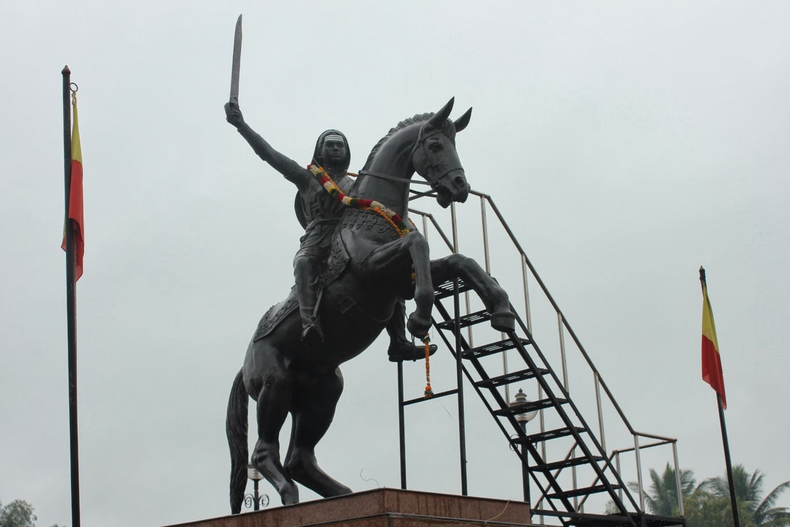
- Kittur Rani Chennamma, was India’s valiant freedom fighter and was the first ruler woman independence activist. Nevertheless being born in a small village, the present Belagavi District of Karnataka, she never feared to oppose the wrong.
- She belonged to the Lingayat community and was proficiently trained in horse riding, sword fighting and archery from a young age. She got married to Raja Mallasarja of the Desai family at the age of 15.
- Rani Chennamma, after losing her husband and son, had to take over the responsibility of her kingdom as well as carry out the uphill task to save it from the British led an armed rebellion against the British East India Company in 1824 after the Doctrine of Lapse was imposed on the territory. She initially tried her best to avoid the war, but the request was turned down. Rani Chennamma could not succeed in the final war but did evoke the fire of freedom in everyone’s heart.
15.Jhalkari Bai:-
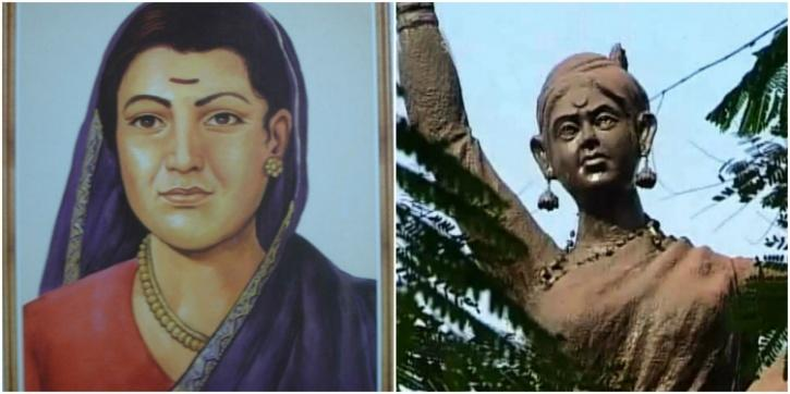
- Born: 22 November 1830, Jhansi
- Died: 1890, Gwalior
- We all know about Rani Laxmi Bai. No wonder her grit and valor have been a tremendous source of inspiration for both women and men. But not many know about another such lion-hearted lady, Jhalkari bai.
- Born to a Dalit family, Jhalkari was an extremely courageous woman and history states the same. She once had an encounter with a tiger in the jungle and killed it with her axe. On account states that she not only challenged a gang of dacoits who raided the house of a village but also forced them to retreat. Her remarkable resemblance to Rani Laxmi Bai and incredible fighting tactics led her in the ‘Durga Dal’.
- Jhalkari Bai was the one who played a very crucial role in the battle of Jhansi as she disguised herself as Rani Laxmibai and took command of the army, thus giving the real queen a chance to escape in the meantime.
16.Umabai Kundapur:-
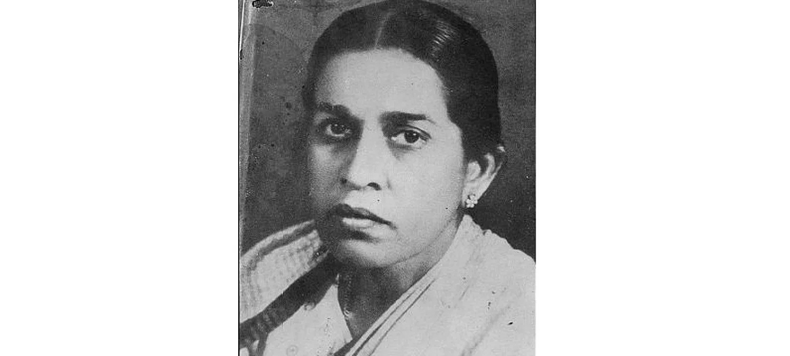
- Born: 1892
- Died: 1992, Hubli.
- Married off at the age of nine, Umabai was yet lucky, as her father in law encouraged her to complete her studies from the Alexandra High School in Mumbai.
- Umabai grew up to be a part for a number of freedom fighting acts and was the founder of the of ‘Bhagini Mandal’. She was also the leader of women’s wing of Hindustani Seva Dal.
- Very less are like Umabai Kundapur who shunned limelight from the beginning and refused all voluntary posts and honors that came her way. She was the one who used to provide shelter to the freedom fighters from the British. Her life and achievements are an example of a long life of unselfish service to the country.
17.Savitri Bai Phule:-
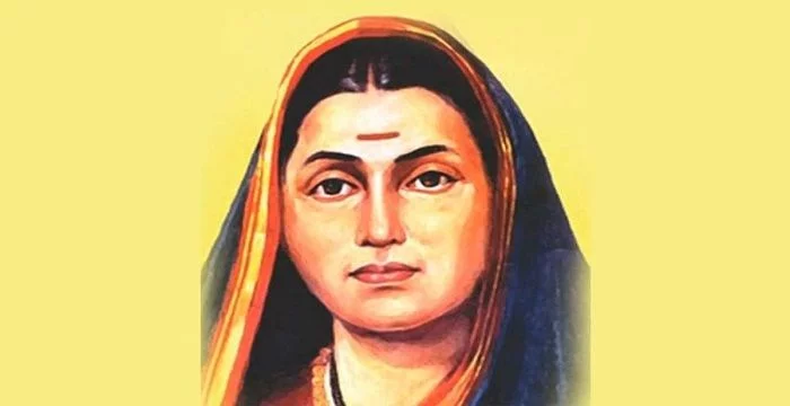
- Born: 3 January 1831, Naigaon
- Died: 10 March 1897, Pune
- Above lines are referring to Savitri Bai Phule, said in Thom Wolf and Suzana Andrade’s piece titled ‘Savitribai and India’s Conversation on Education’, published in the Oikos Worldviews Journal in 2008.
- Savitri Bai Phule was India’s first female teacher at India’s first girl school.
- In the 19th Century, this lady along with the support of her husband, Jyotirao Phule, rose and dared to break the traditional stereotype of the society during the British regime.
- Back then, to educate women was considered a bad omen, but Savitri Bai was not a lady who would succumb to the people’s criticism. Some orthodox localities used to throw stones, mud, rotten eggs, tomatoes, cow-dung and dirt at her, but she still taught the girls by carrying an extra sari with her to tackle this issue. She has brought about social reform in Maharashtra and is widely acknowledged for the same through her literary works.
18.Capt Laxmi Sehgal:-
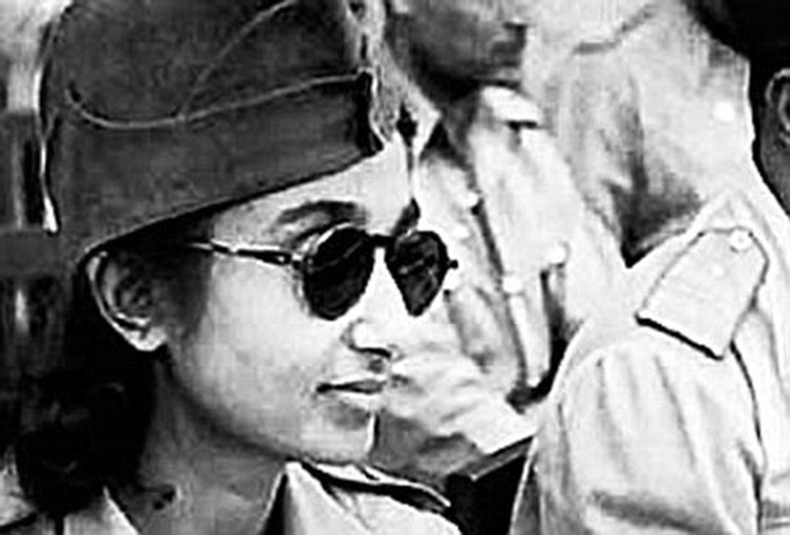
- Born: 24 October 1914, Malabar District
- Died: 23 July 2012, Kanpur
- This multi-faceted personality, a hidden gem in our Indian women, Capt Laxmi Sehgal, was Not Only Led India’s First All-Women Regiment but was also A Doctor, Social Activist & More. She was the one who led the Rani Jhansi Regiment, one of the first women contingents of the world.
- Born in Madras in the family of lawyers, Laxmi always listened to her heart. It is said, when untouchability was in practice in India, she went to a tribal girl, held her by hand and requested her to play.
- She looked after the patients in Kanpur and charged them a minimum fee till she was 92 years old. She received the Padma Vibhushan, the second highest civilian award, for the undying contribution to the society.
19.Moolmati:-
- Moolmati is yet another great woman, a fierce patriot, who inspired the freedom struggle. She was the mother of Ram Prasad Bismil.
- Bismil was the one who famously formed the Hindustan Socialist Republican Association in 1928 along with Bhagat Singh, Chandrashekhar Azad, Ashfaqulla Khan, Rajguru, and others. Moolmati was a simple lady who was unmoved when her son was hanged till death by the British rulers, on the contrary, she was proud about the fact. She also addressed a public gathering and offered her other son to the freedom movement. It is always due to such brave mothers of India, that the sons serve the country and do it with happiness.
20. Uda Devi:-
- Born: Lucknow
- Died: November 1857, Lucknow.
- Uda Devi and other female Dalit participants are fondly remembered as the warriors or “Dalit Veeranganas” of the 1857 Indian Rebellion.
- Bold, resolute and a woman, Uda Devi had a humble background. The anger of the Indian people with the British administration was at the peak when Uda Devi reached out to the queen Begum Hazrat Mahal to enlist for war. The Begum helped Uda Devi form a women’s battalion under her command to prepare for the battle that was headed their way.
- Uda Devi and her husband, both fought bravely for the war. Based on varying accounts it is claimed, Devi had climbed a pipal tree, from where she shot dead 32 or 36 British soldiers. It is believed that, in respect in recognition of her brave feat, British officers like Campbell had bowed their heads over her dead body.
21. Janaky Athi Nahappan:-
- Born: 25 February 1925, Kuala Lumpur, Malaysia
- Died: 9 May 2014, Cheras, Kuala Lumpur, Malaysia
- Not many might have heard this name, but she was the founding member of the Malaysian Indian Congress. Belonging to a well to do Tamilian family, when Janaky heard about Subhas Chandra Bose’ appeal to give whatever they could to help in gaining Indian independence, she immediately donated her gold earrings and determined to join the women’s wing in the Rani of Jhansi regiment of the INA.
- She was among the first women to join the Indian National Army that was organized during the Japanese occupation of Malaya to fight for Indian independence with the Japanese. After the second world war, she emerged as a welfare activist. She was awarded the fourth highest civilian honor of Padma Shri in 2000, by the Indian Government.
22. Ammu Swaminathan:-
- Born: 1894, India
- Died: 1978, Palakkad district
- One of the arrogant inmates in the Vellore jail once called a sanitary worker “Shudrachi” (making her caste as her identity). Ammu, even though belonging to a Nair stood up against this and sternly replied to the inmate,
- Ammu Swaminathan was an Indian social worker and political activist during the Indian independence movement and also a member of the Constituent Assembly of India.
- Ammu never went to school. She received only a rudimentary education at home, to prepare her for married life. After her father’s death, through Sambandam System, she was later married to Dr. Subbarama Swaminadhan.
- Under her husband’s tutelage, her life transformed and blossomed. She studied, honed her skills and transformed to be one of the prominent faces in the pre-independence struggle of India.
- Ammu was very conscious of the arrogance of the upper-caste. By all the means, she constantly tried to unsettle them by standing against it. She was also a member of the committee for drafting the Indian Constitution. ALong with numerous social work, she had a political career and went to Russia (erstwhile USSR), China, USA, and Ethiopia as a goodwill ambassador. She also served as the President of the Bharat Scouts and Guides from 1960 to 1965.
23. Matangini Hazra:-
- Born: 19 October 1870, Tamluk
- Died: 29 September 1942, Tamluk
- Matangini Hazra, was a die-hard patriot and is well known for her unshakeable spirit. She was an Indian revolutionary who actively participated in the Indian independence movement. Affectionately known as the ‘Gandhi Buri’ meaning the old Lady Gandhi, she was shot dead by the British Indian police in front of the Tamluk Police Station (of erstwhile Midnapore District) on 29 September 1942. Her contributions toward the country have been commendable in spite of having a tragic personal life.
- Being born to a poor peasant family, widowed at the age of 18 without any offspring, Matangini has always participated in many protests against the British Raj and has been jailed a couple of times.
- During the involvement in the Quit India Movement, 71 years old Matangini led a procession of six thousand supporters. She was shot repeatedly by the police but she chanted “Vande Mataram” till her last breath and held the Indian flag high up.
24. Nellie Sengupta:-
- Born: 1886, Cambridge, United Kingdom
- Died: 1973, Kolkata
- Nellie was an English woman, who went door to door during the pre-independence time to sell Khadi. When she was a young girl, she fell in love with Jatindra Mohan Sengupta, a young Bengali student at Downing College.
- Despite severe parental opposition, she married Jatindra and returned to Calcutta with him. Her husband was a renowned Lawyer by the time he had decided to join in the freedom movement initiated by M.K Gandhi. Neelie also supported her husband and went down on the street to show her protest. She did not stop there, she defied the law by selling Khadi (hand-spun cloth) door to door.
- For addressing an unlawful assembly, she suffered four months’ imprisonment at Delhi for addressing an unlawful assembly, in 1931. Nellie was also appointed as the President of Congress when many senior leaders of the party were arrested during Salt Satyagraha.
25. Rani Gaidinliu:-
- Born: 26 January 1915, Manipur
- Died: 17 February 1993, Manipur
- Known for the armed resistance against the British Raj, Rani Gaidinliu, is the forgotten daughter of the hills. At the age of 13, she started to preach the people in her tribe. She joined her cousin Haipou Jadonang, who had led the Heraka Movement. This movement was for the revival of the Naga Tribal religion. She led this movement against the British when she was 17, which resulted in her arrest. She was then sent for a 14-year long imprisonment.
- Her forces had started to engage in armed rebellion against the British in Cachar Hills (16 February 1932) and the Hangrum village (18 March 1932). Her growing followers and popularity threatened the British forces, which made them launch a manhunt for her. This, in turn, forced her to go underground.
- With many more sacrifices, this Rani of Nagas was fondly acknowledged by Pandit Jawaharlal Nehru, for her indomitable spirit and for the freedom that she fought for valiantly.
26. Sucheta Kriplani:-
- Born: 25 June 1908, Ambala
- Died: 1 December 1974, New Delhi
- India’s first woman chief minister, Sucheta Kriplani, chartered her own independent course. She was committed to the Gandhian ideology, Sucheta was fearless in her mind and spirit.
- She was born in Ambala, Punjab (now in Haryana) to a Bengali Brahmin family. She completed her education at Indraprastha College and Punjab University prior to becoming a Professor of Constitutional History at Banaras Hindu University.
- She came to the forefront during the Quit India Movement. She worked with other Gandhians during the partition riots and was one of the few women who were elected to the Constituent Assembly and was part of the subcommittee that drafted the Indian Constitution. Sucheta also became a part of the subcommittee that laid down the charter for the constitution of India.


Like it
No matter how good at history you are, there will still be a hidden side of it you just never knew. The real gems aims to showcase such people who are a real hero in life.
For UPSC students it is very important. In a detailed manner and properly portrayed all the brave, courageous famous females of India in ancient times.
You may write about Queen Rudrama Devi: Ruler of the Kakatiya Kingdom, Andhra Pradesh also.
12th and 15th half images are of Savitribai Phule.
Wrong information in some points
Year of quit India movement 1983 and name in 12th point
Thanks for sharing very in-depth and valuable information , it will be very useful for beginners.